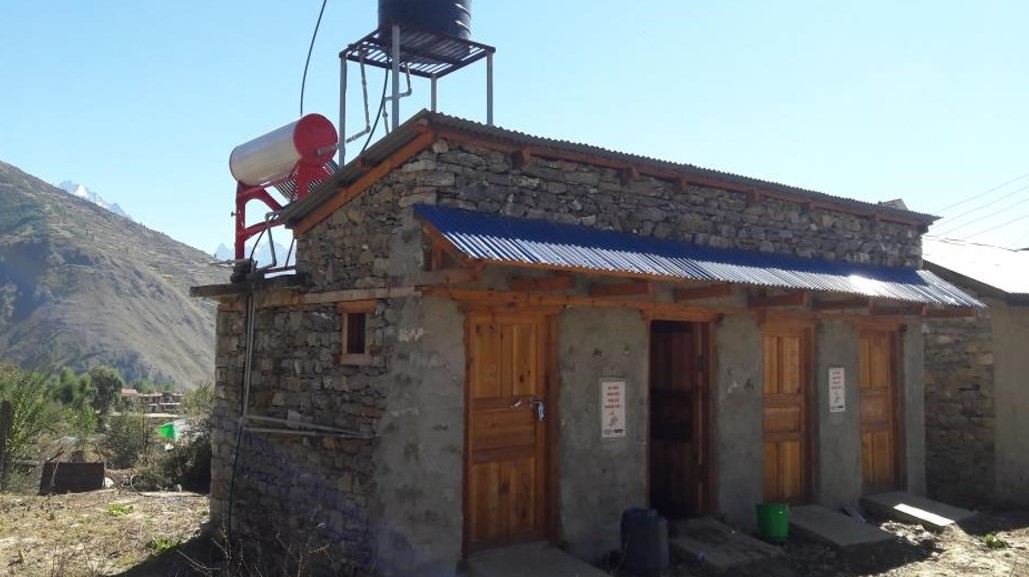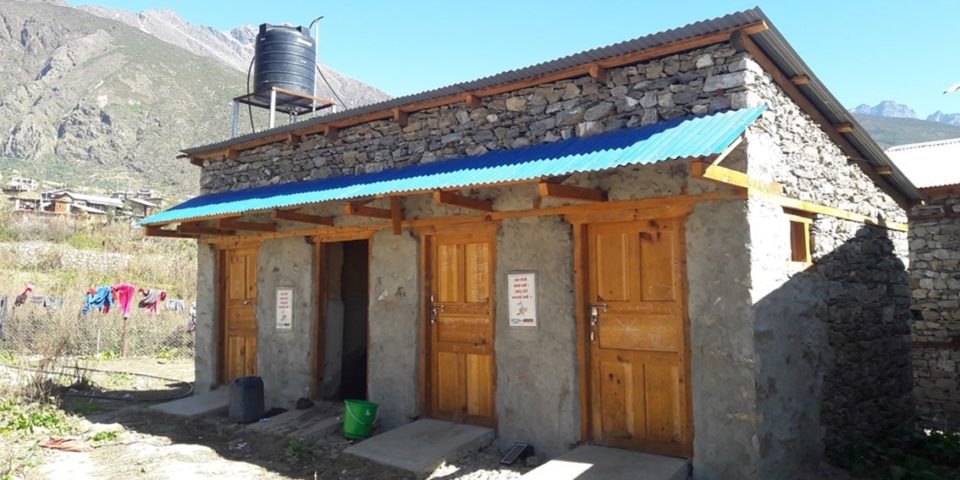
A Consortium organization with its local partner and stakeholders decided to pilot the construction of public toilets with an attached solar powered hot water bathing facility in the remote rural areas of Nepal’s Humla district. The introduction of these facilities through a process which actively engaged all stakeholders at all times proved to be successful in terms of their use, ownership and sustainability.
Through a MoU signed before the start of construction, the district water supply and sanitation department, and district and village development committees agreed on a cost sharing mechanism to foster local ownership. The local government stakeholders committed to provide land and a financial contribution corresponding to 40% of the total construction cost and the project covered the remaining costs. To ensure the sustainability of the constructed system a management structure consisting of different stakeholders led by the local government (VDC) was set up. An agreement was then signed between the management team and a private entrepreneur who takes responsibility for the overall operation and maintenance of the system. This public private partnership has proven a promising model as the entrepreneur charges minimal costs for using the hot water bathing facilities. The system is accepted by the community and people are willing to pay to use the hot water bathing facility. Toilet users are on the rise which has also improved personal hygiene behavior in the community. So far about 2,000 people have benefitted from the two new and so far only combined public latrine and bathing systems in the region.

